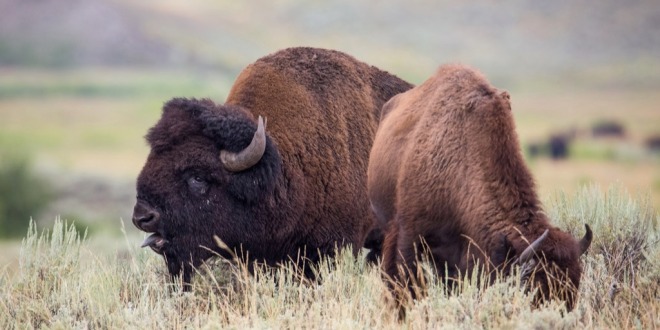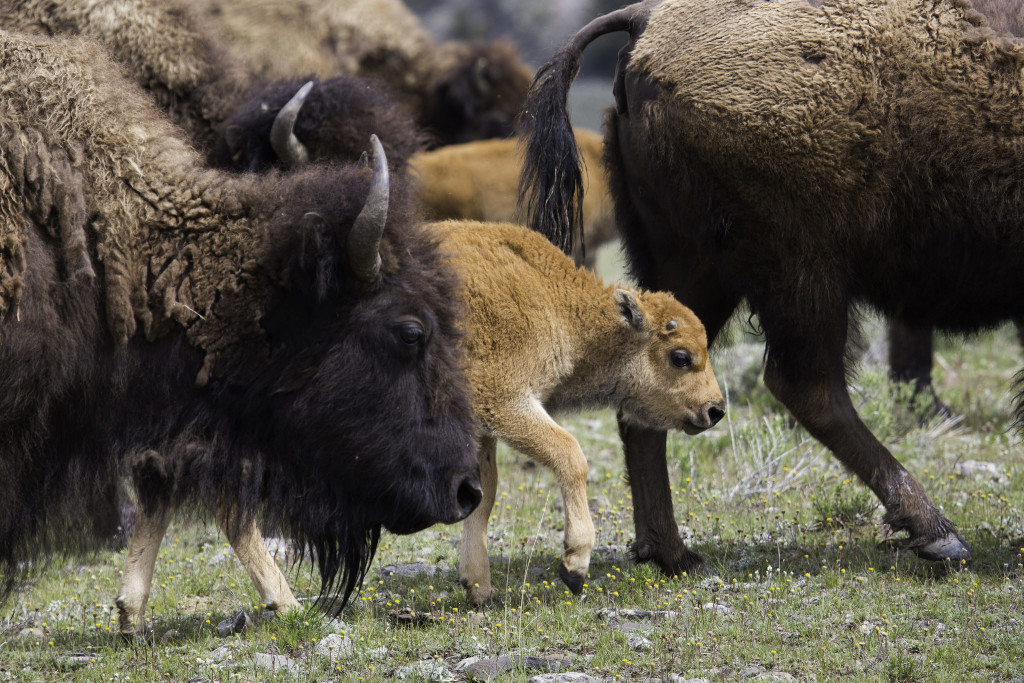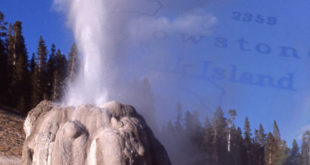Bison are, in many ways, as emblematic of Yellowstone National Park as geysers.
Yellowstone bison are relics of an earlier time, a time when millions of bison roamed across most of the continental United States and Canada. They were nearly exterminated in the 19th century, before some valiant conservation efforts around the turn of the 20th century brought them from the brink.
One of those efforts was the National Bison Range, established in 1908 in western Montana. Besides helping preserve what few bison were left at the time of its opening, the National Bison Range also produced, indirectly, much farther down the line, an uncanny book called American Bison: A Natural History by Dale F. Lott.
Lott, a respected wildlife behavioral scientist and professor at the University of California–Davis from the 1970s to his death in 2004, was born in 1933 outside the National Bison Range. His father worked at the range. His grandfather was superintendent. Growing up in such close proximity to bison imbued Lott with a sense of wonder toward these massive ungulates. And a sense of respect.
“I first encountered bison not as symbols of the West, the squandering of a natural resource, or a conservation triumph,” he writes in the Preface. “They were simply the animals I had seen most often when I was a young child—enthralling in and of themselves. I still see them that way, and my research goal was to know and understand them better. The basic question has always been, how do they get on in the world?” (xiii)
American Bison, a part of the “Organisms and Environments” series from University of California Press, is in the top tier of bison natural history. In clear but powerful prose, drawing from a deep well of knowledge, Lott fully describes his subject, without digressing or descending into too many technicalities. Read this paragraph, for instance, where he briefly sketches why bull bison often react with hostility when approached:
A territorial animal can predict attack pretty successfully by knowing territorial boundaries. The territory owner usually challenges all competitors within a given space and keeps up the pressure with threats and attacks until they leave. But bull bison aren’t territorial. They are roamers, drifting singly or in small, temporary groups. Because they cannot use their location in space to predict whether or not another animal will attack them, they read the animals around them, detecting and responding to behavior that consistently precedes an attack (7-8).
That’s something to remember every time you read about a bison goring.
American Bison covers everything you would want to know about bison behavior: what they eat, how they mate, how they keep their 2,000-pound bulk cool in summertime. And that’s only the first third. The rest of the book goes into topics as diverse as bison ancestry, bison hunting, domestication, and conservation. It even, in brief chapters, covers what Lott calls a bison’s “neighbors:” wolves, badgers, prairie dogs, etc.
Of course, in American Bison, Lott is biased toward the wild bison he grew up with, in contrast to the growing head of domesticated bison around the country: “I studied and admired wild bison for decades. The thought of their being converted to humpbacked cattle gets my viscera going” (195). He admits he’s not all against raising bison for burgers and the like, but if you want wild bison, you’re going to need spaces like Yellowstone National Park where they can roam.
If you have even the slightest interest in how bison tick and where their future might lay, you should read American Bison. You can order it here..
 Yellowstone Insider Your Complete Guide to America's First National Park
Yellowstone Insider Your Complete Guide to America's First National Park







You must be logged in to post a comment.